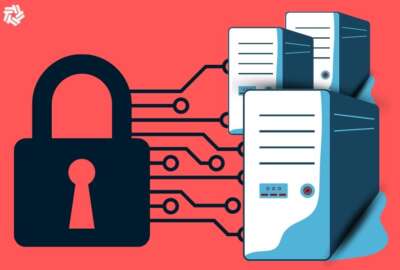Sponsored by Neo4j
DHS S&T working on data solutions for cybersecurity, privacy, AI
Alexandria Phounsavath, director of DHS S&T’s Data Analytics Technology Center, is exploring new approaches to solving some of the biggest challenges in data.
One of the Department of Homeland Security’s Science and Technology (DHS S&T) Directorate’s many projects focuses on protecting data, and is “a different way of thinking about security,” according to Alexandria Phounsavath, director of S&T’s Data Analytics Technology Center. The effort is called data autonomy, and Phounsavath said it compliments other approaches to cybersecurity, like zero trust.
“But this one is data-centric, and the way we think about data autonomy is we’ve developed a concept in architecture, actually, and it has components,” Phounsavath said on Federal Monthly Insights — Unleashing Data Insights to Drive Government Innovation.
She explained that those components are essentially fine print attached to the data, allowing the owner of the data to place controls on it. For example, that data may only be available for five days before deleting itself. Or it may communicate the best way to view it, be that in tabular format or a graph of some sort. It can also include a billing element which could, for example, allow data to be used for research for free, but require companies to pay for it.
“It’s actually putting data in charge. And I’ll have to say that this is an open ended problem,” Phounsavath said. “We’re actually doing some prototypes right now, some of those main components like that I described, not the whole thing, but it’s open ended in the sense that to make this data autonomy concept realized, it’s going to require new products and services in the future, and a lot of thinking from all our partners in academia and industry, other government labs, to kind of solve this problem. So I think it’s a very interesting space. It requires a lot of thought, but it’s really, really exciting.”
That’s not the only data project S&T has going on; Phounsavath said they’re also working on data privacy enhancing technologies. Those include homomorphic encryption, secure multi-party computation, and both anonymized and synthetic data. She said multiple parts of government are interested in these technologies, participating in privacy research and development. The goal is that improvements to privacy enhancing technologies will improve access to data, which will lead to greater benefits from that data.
Training AI with synthetic data
And some of those technologies have other applications as well. For example, Phounsavath said S&T’s Transportation Security Lab is trying to figure out how to effectively use synthetic data to train artificial intelligence and machine learning-driven threat detection for both people and baggage at airports.
“So today, the problem is that you have explosives and they’re dangerous to handle, and data collection is expensive, and the way that they collect data today is TSL actually hires people to kind of dress up, pack bags and walk through machines,” she said. “And creating simulants for those explosives is also expensive, so we’re talking about a dearth of diversified data. So we’re looking at ways that TSA and TSL can use synthetic data to help improve those algorithms that detect threats.”
The question S&T is working on in this use case is how to use synthetic data for this purpose. Among other things, they’re trying to determine what data artifacts matter, and whether the images have to be perfect. For example, when x-rays hit metal, it creates scatter, because the beams become visible. Does that scatter need to be included in the synthetic data to properly train the algorithms?
But Phounsavath also said AI doesn’t need to be the go-to solution every time.
“Yes, artificial intelligence and machine learning are all the rage. But even before it became the rage, you had statistics, you had all these other approaches that people do, and AI and ML, it’s not where we jump right away,” she said. “It’s all about first defining what the problem is and understanding what the mission end users are trying to achieve. And AI/ML might come into that. But there are others; maybe it’s a graph approach that you take, or maybe something a lot more simple before you get to fancy AI/ML, or LLMs these days.”
Copyright © 2024 Federal News Network. All rights reserved. This website is not intended for users located within the European Economic Area.





